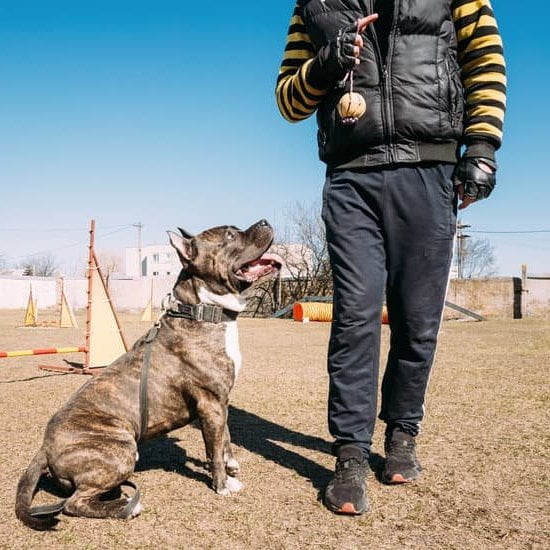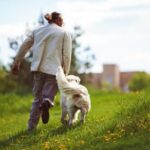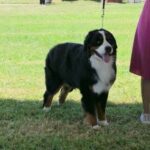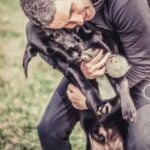When it comes to hunting wounded deer, having a well-trained dog by your side can make all the difference. In this article, we will guide you through the process of training your dog to track wounded deer, from understanding their natural instincts to advanced techniques that enhance their tracking abilities.
Training a dog to track wounded deer is crucial for several reasons. First and foremost, a trained dog can significantly increase your chances of finding injured game, as they excel in locating scents and following trails. Additionally, using a dog in deer tracking situations can save you time and effort spent searching for wounded animals on your own.
Dogs have incredible innate abilities that make them excellent trackers. Their acute sense of smell allows them to detect scents that humans may not even be aware of. They rely on their keen senses, such as smell and hearing, to track and locate wounded deer. Understanding these natural instincts and capabilities will greatly aid in training your dog for this specific purpose.
In the upcoming sections, we will delve into the various aspects of training a dog to track wounded deer. We will discuss how to assess your dog’s suitability for this type of training based on breed characteristics and provide tips on selecting the right canine companion.
Furthermore, we will guide you through basic obedience training, introduce scent detection training methods, teach your dog to track scents using a scent trail, incorporate wounded deer scenarios into your training sessions, explore advanced techniques, troubleshoot common issues during training, and emphasize the importance of positive reinforcement.
By investing time and effort into properly training your dog to track wounded deer, you are setting the stage for successful hunting experiences while also forming a stronger bond with your loyal companion. So let’s get started on this exciting journey towards enhancing your dog’s tracking abilities.
Understanding the dog’s natural instincts and capabilities in tracking
Dogs have a remarkable ability to track scents, making them well-suited for deer tracking. Understanding their natural instincts and capabilities in tracking is essential for successful training. Dogs rely on their senses, particularly their sense of smell, to track scents and locate wounded deer.
One of the reasons why dogs excel at tracking is due to their powerful olfactory system. The part of a dog’s brain responsible for analyzing smells is much larger compared to humans, allowing them to detect and interpret scents more effectively. Additionally, dogs have a higher number of scent receptors in their nose, which enables them to pick up even faint traces of scent.
A key instinct that drives dogs’ tracking abilities is their prey drive. Dogs have an innate desire to chase and capture prey, making them highly motivated when it comes to tracking scents. This instinct can be traced back to their evolutionary history as hunting animals. By harnessing this natural prey drive during training sessions, you can channel it towards the specific task of tracking wounded deer.
Understanding these natural instincts and capabilities is crucial for effective training. By recognizing how dogs rely on their senses and tapping into their innate prey drive, you can develop training techniques that utilize these natural strengths. Combined with proper guidance and consistent training, your dog will become a skilled tracker capable of locating wounded deer efficiently.
Relevant Data
| Natural Instincts | Capabilities |
|---|---|
| Innate sense of smell | Ability to detect and interpret scents more effectively than humans |
| Powerful olfactory system | Higher number of scent receptors in the nose |
| Prey drive instinct | Motivation to chase and capture prey |
Assessing the dog’s suitability for deer tracking training
When it comes to training a dog to track wounded deer, selecting the right canine candidate is crucial. Not every dog is suited for this type of training, so it is important to assess their suitability before diving into the training process. In this section, we will discuss the ideal breed characteristics for deer tracking and provide tips on selecting a suitable dog for this specialized training.
Ideal breed characteristics
Certain breeds possess innate qualities that make them more suitable for deer tracking. For instance, hounds are known for their exceptional scenting abilities and endurance, making them excellent choices as tracking dogs. Breeds such as Bloodhounds, Beagles, and Coonhounds are often employed in professional tracking work due to their natural aptitude in following scent trails.
It is important to consider a dog’s physical attributes as well when assessing their suitability for deer tracking. Dogs with long ears and droopy lips are known as “scent hounds” and tend to have an enhanced ability to pick up scents from the ground. Additionally, dogs with large noses have a larger olfactory system, allowing them to detect scents more effectively.
Selecting a suitable dog
When choosing a dog for deer tracking training, it is crucial to evaluate their temperament and drive. Look for dogs that display an eagerness to explore and follow scents, as they are more likely to excel in tracking tasks. It can be beneficial to observe potential candidates in various environments or engage them in scent-related games to gauge their interest and enthusiasm.
Furthermore, consider your own experience level and commitment when selecting a suitable dog for training. Some breeds may require more intensive training or have specific needs that must be met. It is essential to choose a breed that aligns with your capabilities and lifestyle so that you can provide the necessary time, resources, and support for their training.
Remember, not all dogs will possess the ideal breed characteristics or temperament for deer tracking, but with proper guidance and training, many dogs can still be successful trackers. The key is to select a dog that has a natural inclination towards following scents and possesses the physical attributes necessary for efficient tracking. By carefully assessing the dog’s suitability for deer tracking training, you can set a solid foundation for success in the training journey ahead.
Building a strong foundation
Importance of basic obedience training
Before diving into specific deer tracking training, it is crucial to establish a strong foundation of basic obedience training for your dog. Basic obedience commands such as sit, stay, and recall are not only essential for maintaining control over your dog in various situations but also serve as building blocks for more advanced training techniques. Dogs that have a solid understanding of these commands are easier to handle and more receptive to learning new skills.
Teaching basic commands
To teach the “sit” command, start by holding a treat close to your dog’s nose and then slowly lift it upward towards their head. As your dog follows the treat with their eyes and nose, their bottom will naturally lower into a sitting position. The moment their bottom touches the ground, say “sit” and reward them with the treat while praising them verbally.
For the “stay” command, begin by asking your dog to sit. Then take a step back while raising your palm towards them and saying “stay.” If your dog remains seated without moving, give them verbal praise and offer a treat as a reward. Gradually increase the duration of the stay command by taking additional steps back before returning to reward them.
The recall command is especially important for off-leash situations. Start by putting your dog on a long leash or in an enclosed area where they cannot escape. Call their name followed by a clear cue such as “come” or “here.” When they come towards you, reward them with treats or verbal praise. Practice this command regularly in different environments to ensure that it becomes reliable.
Consistency and patience
When training your dog in basic obedience commands, consistency is key. Use the same word cues each time and reinforce positive behavior consistently with rewards and praise. Always be patient with your dog’s learning process, as some dogs may pick up new commands faster than others. Keep training sessions short and frequent, focusing on one command at a time to avoid overwhelming your dog.
Next steps
Once your dog has mastered basic obedience commands, you can confidently move on to more specialized training for deer tracking. Building a strong foundation of obedience training will not only make the subsequent training easier but also create a stronger bond between you and your furry companion, setting the stage for successful tracking endeavors together.
Introducing scent detection training to your dog
Scent detection is a crucial aspect of training a dog to track wounded deer. Dogs have an exceptional sense of smell, and their ability to pick up scents can greatly aid in locating injured animals. Introducing scent detection training to your dog is an essential step in preparing them for successful deer tracking missions.
The significance of scent detection in deer tracking
Scent detection plays a vital role in deer tracking. When a deer is wounded, they leave behind a trail of scents that dogs can detect and follow. By training your dog to recognize and track these scents, you are enhancing their ability to locate wounded deer quickly and efficiently.
During scent detection training, dogs learn how to identify and differentiate specific scents related to wounded deer. They become familiar with the smell of blood, adrenaline, and other substances commonly associated with a wounded animal. This training helps them establish the connection between these scents and the need to track them.
Gradually introducing scent training
Introducing scent detection training requires a gradual approach to ensure your dog comprehends the desired behavior effectively. Start by using familiar scents that your dog encounters regularly, such as toys or treats. Encourage them to search for these items using their nose and reward them when they successfully locate them.
Once your dog understands the concept of searching for scents, gradually increase the difficulty level by using more specific scents related to wounded deer. You can start by rubbing a clean cloth on the hide or antlers of a freshly killed deer and hiding it for your dog to find. As they progress, you can gradually introduce stronger scent sources like blood-soaked cloths or even small pieces of raw venison.
Remember that patience is key during this process. Each dog learns at its own pace, so make sure to provide ample positive reinforcement whenever they make progress in detecting the desired scent. With consistent training sessions and encouragement, your dog will develop a strong foundation in scent detection, laying the groundwork for successful deer tracking.
Teach your dog to track scents using a scent trail
Scent detection is a crucial skill for a dog trained to track wounded deer. By following the scent trail left by the injured animal, a well-trained dog can significantly increase the chances of successfully locating and recovering wounded deer. In this section, we will provide a detailed guide on teaching your dog to track scents using a scent trail.
Building a scent trail is an essential step in training your dog to track wounded deer. To begin, gather fresh or frozen deer blood from local hunters or hunting supply stores. Start by creating a small blood trail in a straight line, about 10-15 feet long. Gradually increase the length and complexity of the trail as your dog becomes more skilled.
When introducing your dog to the scent trail, start with short and straightforward trails. Use one drop of blood every two feet to create a clear and distinct scent path for your dog to follow. Place the blood drops on the ground or on leaves near eye level for easier tracking.
To train your dog to follow the scent trail, encourage them to use their nose and stay focused on the task at hand. Use verbal commands such as “track” or “find it” while pointing towards the direction of the scent trail. As your dog progresses, gradual distractions like fresh scents or cross-trails can be added to challenge their abilities.
| Steps for Building Scent Trails |
|---|
| 1. Gather fresh or frozen deer blood. |
| 2. Start with a small blood trail (10-15 feet long) in a straight line. |
| 3. Increase length and complexity of the trail gradually. |
| 4. Use one drop of blood every two feet to create a clear and distinct scent path. |
| 5. Place blood drops on the ground or leaves near eye level for easier tracking. |
Incorporating wounded deer scenarios into your dog’s training
When it comes to training a dog to track wounded deer, it is essential to incorporate realistic scenarios into their training. This will help them develop the necessary skills and instincts needed for successful tracking in real-life situations. By simulating wounded deer trails, you can enhance your dog’s tracking abilities and ensure they are prepared for the challenges they may face.
To create simulated wounded deer trails for training, start by obtaining a fresh deer hide or scent pad from a reputable source. Deer hides that have been obtained legally from hunting seasons or roadkill can be used for this purpose. Cut the hide into smaller pieces and sprinkle them along a predetermined path or trail.
Use different methods to introduce the scent of blood and injured deer to the trail. You can use actual deer blood or commercially available scent products specifically designed for training dogs in tracking wounded game. Apply these scents sparingly along the trail, focusing on areas where a wounded deer is likely to leave traces of its passing.
When introducing this scenario to your dog during training sessions, make sure to replicate a realistic experience as much as possible. Start by having your dog familiarize themselves with the scent of blood and injured deer before gradually exposing them to following the scent trail. Remember to use positive reinforcement techniques such as treats or verbal praise when they successfully locate the source of the trail.
During these training sessions, it is important to closely monitor your dog’s behavior and observe any weaknesses or areas that need improvement. This will allow you to modify and adjust your training techniques accordingly, ensuring that your dog is continuously challenged while also building upon their existing skills.
Advanced training techniques to enhance your dog’s tracking abilities
Advanced training techniques are crucial when it comes to enhancing your dog’s tracking abilities for wounded deer. These techniques can take your dog’s skills to the next level and make them even more effective in tracking and locating injured deer. Here are some advanced training techniques that you can incorporate into your dog’s training regimen:
- Variable Scent Trails: In order to challenge your dog’s tracking abilities, you can begin using variable scent trails. This involves introducing different scents along the trail, such as deer blood or urine, to simulate real-life scenarios where deer may have left multiple scents behind. By exposing your dog to a variety of scents, they will become more adept at distinguishing between different types of scents and tracking the specific scent of a wounded deer.
- Distraction Training: It is important for your dog to remain focused on the task at hand during tracking. To prepare them for real-life situations where distractions may be present, incorporate distraction training into their routine. This can involve setting up controlled distractions such as noise or other animals that may divert their attention from the trail. Gradually increase the level of difficulty by adding more challenging distractions as your dog progresses in their training.
- Challenging Terrain: Deer tracks can lead dogs through various landscapes and terrain types. To prepare your dog for diverse tracking environments, incorporate training sessions in different terrains such as woods, fields, or even water bodies if applicable. By exposing them to challenging terrain during training, your dog will learn how to navigate through obstacles and adapt their tracking skills accordingly.
- Advanced Scent Discrimination: As your dog becomes more proficient in tracking wounded deer, you can introduce advanced scent discrimination exercises. This involves using multiple scent sources and teaching your dog to distinguish between fresh and old scents or differentiate between different wounded animals’ scents. Gradually increase the complexity of these exercises over time to continuously challenge your dog’s olfactory capabilities.
By incorporating these advanced training techniques into your dog’s tracking regimen, you can enhance their abilities to effectively track wounded deer. Remember to be patient and consistent in your training efforts, as it takes time for dogs to develop and refine their tracking skills. With dedication and practice, your dog will become a valuable asset in the field when it comes to tracking wounded deer.
Troubleshooting common issues during deer tracking training
During the process of training a dog to track wounded deer, it is common to encounter certain challenges and issues. Addressing these issues promptly and effectively is crucial for successful training outcomes. This section will discuss some common problems that may arise during deer tracking training and provide strategies for overcoming them.
One common issue is when a dog loses interest or becomes distracted while tracking. This can happen if the training sessions are too long or repetitive, causing the dog to become bored. To address this, it is important to keep the training sessions short and engaging. Varying the elements in the training environment, such as locations and scents, can help keep the dog interested and focused.
Another challenge that may arise is when a dog struggles to follow a scent trail accurately or gets easily confused. This could be due to lack of experience or distractions in the environment.
To overcome this issue, it is recommended to start with simple scent trails and gradually increase their complexity as the dog progresses in its training. It is also helpful to eliminate any potential distractions in the training area and provide plenty of positive reinforcement when the dog successfully follows a scent trail.
Some dogs may exhibit fear or hesitation when tracking wounded deer, especially if they have had negative experiences in similar situations before. In such cases, it is important to approach the training process with patience and understanding. Gradually introducing simulated wounded deer scenarios can help desensitize the dog to these situations. Providing reassurance and positive reinforcement throughout the training can also build confidence in the dog.
| Issue | Solution |
|---|---|
| Dog loses interest or gets distracted | Keep sessions short and engaging; vary elements in training environment |
| Dog struggles to follow scent trail accurately | Start with simple trails and gradually increase complexity; remove distractions in training area |
| Dog exhibits fear or hesitation | Gradually introduce simulated wounded deer scenarios; provide reassurance and positive reinforcement |
By addressing these common issues and using the provided solutions, dog owners can overcome challenges encountered during deer tracking training. It is important to remember that every dog is unique, and what works for one may not work for another. Patient, consistent, and positive training methods will help ensure the success of the training process.
Reward-based training and the importance of positive reinforcement
Training a dog to track wounded deer requires time, patience, and consistency. One of the most effective techniques for training dogs in any skill is reward-based training with positive reinforcement. This section will delve into the significance of positive reinforcement in dog training and highlight the benefits of incorporating rewards during tracking sessions.
Positive reinforcement involves rewarding desired behaviors to increase the likelihood of those behaviors being repeated. Dogs are motivated by rewards such as treats, toys, praise, and playtime. When a dog exhibits good tracking behavior, it is important to immediately reward them to reinforce that behavior.
There are several key benefits of using positive reinforcement in dog training for deer tracking. Firstly, it helps build a strong bond between the handler and the dog. Dogs thrive on human interaction and crave attention; rewarding them for their efforts not only strengthens their association between tracking behavior and a positive outcome but also strengthens the bond between the handler and the dog.
Furthermore, positive reinforcement enhances motivation and enthusiasm in dogs. When a dog receives rewards for successfully following a scent trail or locating a wounded deer, it fuels their drive to continue tracking effectively. This can be particularly valuable when facing challenging tracks or scenarios where distractions may be present.
To implement reward-based training during deer tracking sessions, it is essential to identify what motivates your specific dog. Some dogs may respond best to treats, while others are more toy-oriented or guided by praise from their handlers. Experiment with different rewards during training sessions to determine which ones elicit the highest levels of engagement from your canine companion.
Conclusion
In conclusion, training a dog to track wounded deer is an invaluable skill for hunters and outdoor enthusiasts. By utilizing a trained dog, they can greatly increase their chances of successfully recovering wounded game. Throughout this article, we have delved into the importance of training a dog in deer tracking, explored the natural instincts and capabilities that make dogs excellent trackers, and provided tips on selecting the right dog for training.
Building a strong foundation through basic obedience training is essential before delving into scent detection and tracking. Teaching your dog commands such as sit, stay, and recall will establish the necessary discipline and control needed during tracking scenarios. Once these foundational skills are in place, you can gradually introduce your dog to scent detection training.
By incorporating simulated wounded deer scenarios into your dog’s training, you are preparing them for real-life tracking situations. Creating realistic trails that mimic wounded game will challenge their senses and sharpen their tracking abilities. Additionally, advanced training techniques such as using decoy scents and challenging terrain can further enhance your dog’s skills.
While it is important to celebrate your dog’s tracking achievements throughout the training process, it is equally important to remember that there is always room for improvement. Training takes time, patience, and consistency. By investing in the proper training methods and techniques outlined in this article, you will be well on your way to achieving success in training your dog to track wounded deer.
training a skilled hunting companion can be extremely rewarding both for the hunter and their four-legged partner.
With dedication and practice,the bond between you and your trusted hunting companion will strengthen over time.Enjoy celebrating each milestone achieved during their deer tracking journey,and remember to continue honing their skills through consistent practice.Readers are encouraged to take the knowledge shared in this article,to invest time and effort into properly training their dogs for deer tracking.Who knows?
Your faithful pup may just become an invaluable asset on future hunts,guiding you to the wounded deer and ensuring nothing goes to waste.
Frequently Asked Questions
How long does it take to teach a dog to track deer?
The length of time it takes to teach a dog to track deer can vary depending on several factors, including the individual dog’s aptitude and previous training experience. Typically, it can take several months to train a dog for tracking deer, but this can be shortened with consistent and focused training sessions.
It is important to start with basic scent training before progressing to specific deer tracking exercises. Patience and perseverance are key when teaching a dog this skill, as it requires the development of both scent discrimination and tracking abilities.
Can you use a dog to track a wounded deer?
Yes, dogs can be trained to track wounded deer. In fact, using a trained tracking dog can greatly increase the chances of successfully recovering a wounded deer that may otherwise be lost. These dogs are specifically trained to follow the scent trail left by a wounded animal, even if there is no visible blood trail or other signs.
They rely on their keen sense of smell and their ability to differentiate between different scents in order to locate the injured deer. Training should include desensitization exercises to prevent the dog from becoming overly excited or aggressive when encountering live game.
Can dogs track deer with no blood trail?
Dogs have an incredible sense of smell, allowing them to detect scents that humans cannot perceive. While having a blood trail certainly helps in tracking wounded or injured deer, dogs can still track without one under certain circumstances.
Dogs are able to pick up various scents left behind by animals such as skin cells, hair follicles, natural odors emitted by their bodies, as well as any residual blood particles that might not be perceptible by human eyes. However, tracking without a blood trail may pose more challenges and require additional training for both the handler and the dog in order to effectively pick up and follow these less obvious scents left behind by the deer.

Welcome to the blog! I am a professional dog trainer and have been working with dogs for many years. In this blog, I will be discussing various topics related to dog training, including tips, tricks, and advice. I hope you find this information helpful and informative. Thanks for reading!





